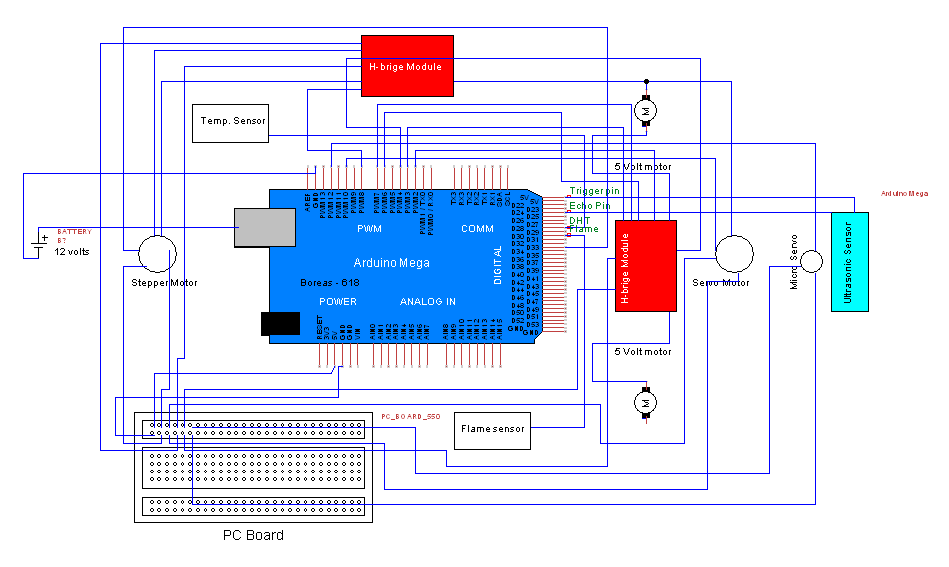Internet of Things Case Study on Fire Detection System
Abstract
Table of Contents
Unattended fires can endanger people and cause significant damage to establishments. It is important to have a fire detection system installed in your home, particularly in the kitchen. The researchers look into and determine if every home has a fire detection system in place, and it turned out that a lot of them don’t.
The problem can be considerably reduced by utilizing the Internet of Things. To address this issue, this project intends to implement a fire detection system that employs a heat sensor and would considerably aid in detecting high-temperature causes of fire. The usage of heat sensors would detect the temperature of fires, the sensor would identify the fire fast, and a warning alarm would be generated so that people could evacuate swiftly and effectively or even put the fire out before it scatters.
Introduction of the Study
This study was designed to be used in the home who do not have a fire detection system and show that early fire detection and the signals of an adequate alert remain important factors in minimizing substantial fire losses. A heat sensor is applied to the system to detect heat. This heat sensor is designed to generate alerts and warnings before smoke becomes even a consideration. The room temperature changes then the heat sensors react. As soon as the room temperature rises above 60 Celsius, a notification signal will be transmitted from the heat detector to an alarm panel and will trigger an alarm that alerts the residents.
The fire detection system is intended to warn them and to facilitate the evacuation of them at the earliest possible time. And also to put out the fire immediately so that loss of property can be prevented and downtime mitigated through early detection for operations.
Proposed Solution
In response to the problems identified, the researchers proposed that a fire detection system be implemented. The system will help in reducing the risk of danger at home because of undetected fire. This project will be equipped with advanced technology, heat sensor will be used together with an alarm panel.

Objectives of the Study
General Objective – The researchers’ overall goal is to design and install a fire detection system for use in the home.
Specifically, the researchers aim the following objectives:
1. To introduce and implement a fire detection system in every household.
2. To effectively reduce the risk of being in danger cause of the fire.
3. To design a system that is capable of detecting undetectable fire at home.
4. To reduce or minimizing substantial fire losses.
5. To mitigate early detection of fire.
6. To assess the system’s acceptability, efficacy, quality, timeliness, and productivity from the perspective of every household.
Scope of the Study
This paper discusses the process of developing and implementing a fire detection system for each home. The system features an undetectable fire detection mechanism, which sends the alarm to an alarm panel that triggers the alarm. The system will provide everybody with a safe space at home. This paper takes into account the current issues and develops an efficient and effective fire detection system using IoT technology.

Significance of the Study
The following persons or groups will benefit from the project’s success:
Homeowners. The system is one of the wisest ways to combat any fire risk. This allows for early detection of a fire before it spreads and causes loss of life and property. The system provides 24/7 safety for homeowners throughout the day.
Firefighters. The system has an early detection before the fire spread. As the earlier the fire is discovered, the quicker the firefighters will be notified and the speedier they will act to put it out.
Researchers. The experience with the development and implementation of the project will further improve the researcher’s knowledge and skills.
Future Researchers. If they choose to create and implement their own Fire Detection System, they can use the study as a guide.
Conclusion
The study was carried out by the researchers to develop and implement a Fire Detection System. The developed system was provided to the study’s target users and respondents. The developed system can safeguard individuals; the researchers determined that the produced system is an effective instrument for reducing the danger of loss of life and property. When a fire breaks out, the alarm can notify the homeowner. With the use of current technology, the designed system will aid in mitigating the risk.

Recommendation
Based upon this study’s positive findings, the researchers strongly recommend that the method be implemented. The system’s implementation will benefit homeowners by creating a safe space for them and lowering the chance of an undetectable fire at home.
The researchers’ main recommendations are as follows:
1. It is recommended that homeowners utilize the system in their home to identify any fires which could be dangerous.
2. The researchers advise using fire detection to establish a safe environment at home.
3. The system is recommended because of the efficiency and dependability it may provide to the target end-users.
4. The system’s adoption is highly recommended because it is successful in detecting fire, and loss of property and downtime can be avoided by early detection for operations.
You may visit our Facebook page for more information, inquiries, and comments.
Hire our team to do the project.


